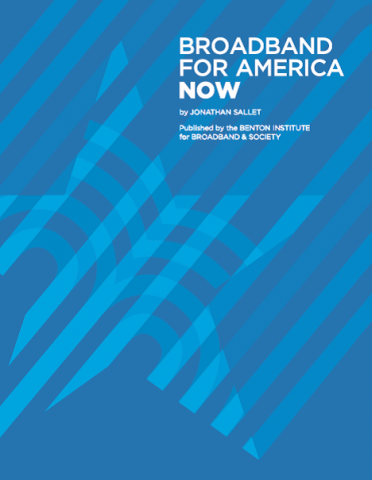We Need Broadband for America Now November 03, 2020
 By John Windhausen, executive director, SHLB Coalition
By John Windhausen, executive director, SHLB Coalition
“We should construct broadband policy based on the ways people use broadband, and that has changed drastically,” writes Benton Senior Fellow Jonathan Sallet in “Broadband for America Now.” He’s absolutely right. Everything has changed since the coronavirus pandemic began – including the ways we use broadband.
Yet the shift to home-based learning and healthcare isn’t temporary. The COVID-19 crisis may have expedited this transition, but we’re only at the beginning of a fundamental, long-term change in how we use the internet. Policy must keep up.
Released last week by the Benton Institute for Broadband & Society, “Broadband for America Now” elevates the universal connectivity goals of Sallet’s 2019 “Broadband for America’s Future.” Affordable, high-quality internet access is no longer a goal. It’s a necessity. In his new essay, Sallet offers policy recommendations to get everyone broadband as soon as possible. Closing the digital divide simply cannot wait for the future.
Looking at changes in America’s broadband use, both during and after the pandemic, the report outlines key recommendations for digital equity, deployment, competition, and community anchor institutions (CAIs). In typical SHLB fashion, I’d like to highlight the Benton agenda for schools, libraries, health clinics, and other anchors.
SHLB has long argued that CAIs require high-quality broadband to serve their communities in the 21st century. We also push for deploying broadband “to and through” anchors to connect surrounding residents. In his essay, Sallet acknowledges that the need for policies enabling “to and through” has never been more clear.
A central conundrum is that policymakers traditionally frame CAI connectivity goals around the physical location of the institution. Case in point: E-rate funds broadband to the classroom and library building, and the Rural Health Care (RHC) Program funds broadband to healthcare provider facilities. Yet the pandemic has driven learning, doctor visits, and library services online, beyond the concrete walls of these institutions. CAIs must be able to serve their students, patrons, and patients wherever they are – but right now, they can only serve those who have broadband at home.
To rectify this, Sallet highlights SHLB’s request that Congress allow schools and libraries to extend their networks to serve nearby homes without fear of losing E-rate funding. This would be an effective first step to bring broadband for America now. Additionally, Sallet offers the following recommendations with regard to CAIs:
-
Ensure that everyone can access anchor institution broadband: Congress should adopt broadband credits and deployment funding, promote competitive rates for anchors, and guarantee CAIs access to spectrum.
-
Ensure that CAIs have the necessary bandwidth to meet increased demand, at competitive prices: Policymakers must establish connectivity goals to accommodate this ever-rising demand, support CAIs with direct funding, and fully fund the RHC program to sustain the telehealth boom.
-
Use anchors as a launching pad for community-based broadband access and competition: To build broadband “to and through” CAIs, the FCC must allow E-rate participants to share their networks with the community.
This is only a small sampling of the thorough solutions that Sallet presents in “Broadband for America Now.” I encourage you to visit Benton’s website to read and consider the work in its entirety.

